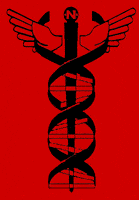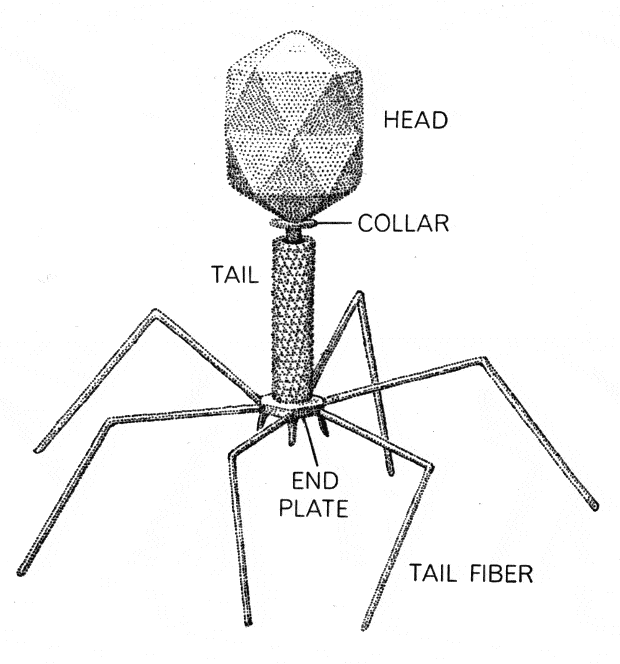

T4 Bacteriophage
1965
Unknown
620 X 664 pixels
Black & White
T4 bacterial virus, an assembly of protein components, is a simple biological “nanomachine”. The head is a protein membrane, shaped like a kind of prolate icosahedron with 30 facets and filled with deoxyribonucleic acid (DNA). It is attached by a neck to a tail consisting of a hollow core surrounded by a contractile sheath and based on a spiked end plate to which six fibers are attached. The spikes and fibers affix the virus to a bacterial cell wall. The sheath contracts, driving the core through the wall, and viral DNA enters the cell. Bacteriophages are being studied in anti-bacterial applications as phage therapy.
© Copyright 1965 by Scientific American. For reprint permission, please contact Scientific American, Inc., Permissions Department, 415 Madison Avenue, New York, NY 10017, or at [email protected].
R.S. Edgar, R.H. Epstein, “The Genetics of a Bacterial Virus,” Scientific American, February 1965.
None.
